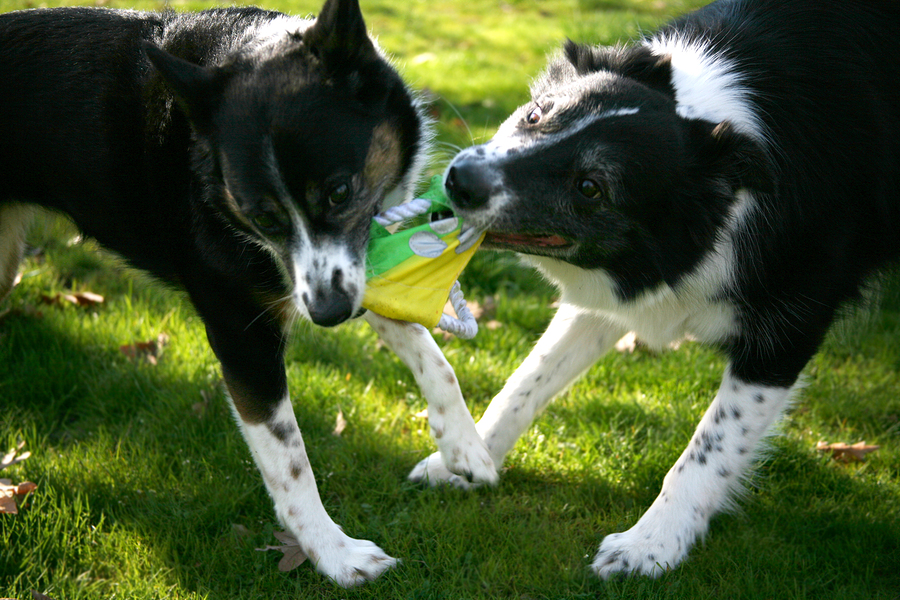Rachel Lees, RVT, KPA CTP, VTS (Behavior)
We’ve all seen the many animal-training programs on cable TV and streaming networks. Some of the concepts depicted in these programs are appropriate for veterinary behavior cases and some are questionable. This article will discuss the learning theories and training philosophies demonstrated in these programs and review why veterinary behavior professionals are using alternative protocols.
Whether you are a veterinary team member working in general practice or interested in behavior, it is important to recommend up-to-date Fear Free information for patients and clients. Giving outdated information can potentially damage the human-animal bond and potentially end with the patient being rehomed or even euthanized.
The first part of this blog post looked at punishment. Punishment is not recommended in treatment as it can slow learning and cognition, suppress behavior, increase fear and fear-based aggression, create damaging and unintended associations with owners and other environmental stimuli, and damage the human-animal bond.
This blog post discusses “dominance” theory, a commonly used training philosophy recommended by many traditional trainers. We will dive into the origins of this concept and discuss current recommendations.
Do You Really Need to Be Alpha?
The word “dominance” is one of the most misunderstood terms in veterinary behavior. The dictionary defines dominance as “the predominance of one or more species in an animal community.” The word predominance is defined as “possession or exertion of control.” When reviewing these definitions, it is hard to imagine that some trainers use them to describe how to train domestic animals. When an owner shows “exertion of control” over a pet, it increases the likelihood of behavior suppression, increased fear and anxiety, and can make owners and their actions conflicting to the pet. This can damage the human-animal bond and even increase owner-related aggression.
Here is the question veterinary professionals and owners have asked for years: If this training is so aversive, why did we start using it in the first place? In 1947, a Swiss scientist, Rudolph Schenkel, published a paper suggesting parallels between domestic dog behavior and that of wolves. In 1970, wildlife biologist L. David Mech built on that notion in his book “The Wolf: The Ecology and Behavior of an Endangered Species,” reinforcing the “alpha wolf” idea Schenkel had promoted (a concept Mech recanted later in his career after studying wolves in the wild). The adapted theory had gone as far as to assume that the human family makes up the dog’s pack, and if behavior problems are present, it is because dogs are working to raise their social rank in the “pack.” But as science has advanced, so has our understanding of canine behavior. Schenkel’s and Mech’s research had significant flaws, including the following:
- Their original research was based on captive wolves. These captive social groups show little resemblance to the normal behavior of free-living wolves. Free-living wolves are all related to each other, which is quite different from artificial colonies of captive wolves.
- Dogs and wolves may be from the same “genus” but are not the same. When these theories were published, they did not take into account the 15,000 years of domestication that separate modern dogs and wolves. These theories were generalized to the human-dog relationship and resulted in increased human-related aggression and behavioral problems. Comparing a dog to a wolf is like comparing a human to an ape. We are similar but not the same.
- The original ritualistic body language displays were misinterpreted as forcible dominance displays. For example, it was reported that the “dominant” wolf will place the subordinate onto the ground. In reality, the subordinate or more fearful wolf will voluntarily assume this position to avoid conflict in a ritualistic appeasement behavior, which is the opposite of the original findings.
Meghan Herron, DVM, DACVB, at Ohio State University, published research concluding that use of forceful techniques can increase the likelihood of aggression toward owners. Unfortunately, the conflict inherent in the alpha-dog theory makes for appealing television, so the idea has been widely disseminated. Veterinary behavior professionals are now working to teach updated concepts that will enhance the bond between humans and dogs instead of putting a barrier between them.
As veterinary professionals it is important that we ask questions about training recommendations and behavioral concerns at each physical exam to confirm that clients are getting the most up-to-date behavior and training information. Clients value your opinion and recommendations and your advice can be lifesaving. Observe training classes you may recommend to ensure that they use Fear Free techniques.
Recommended Reading for Owners or Veterinary Professionals
- From Fearful to Fear Free
- Author(s): Marty Becker, Lisa Radosta, Wailani Sung, and Mikkel Becker
- Decoding Your Dog
- Author(s): The American College of Veterinary Behavior
- Dog Sense
- Author: John Bradshaw
Other Resources
Herron, Meghan E. Shofer, Frances. Reisner, Illana R. 2009. Survey of the use and outcome of confrontational and non-confrontational training methods in client-owned dogs showing undesired
Shaw, Julie K. Martin, Debbie. Canine and Feline Behavior for Veterinary Technicians and Nurses. John Wiley & Sons, Inc. 2015.
This article was reviewed/edited by board-certified veterinary behaviorist Dr. Kenneth Martin and/or veterinary technician specialist in behavior Debbie Martin, LVT.




